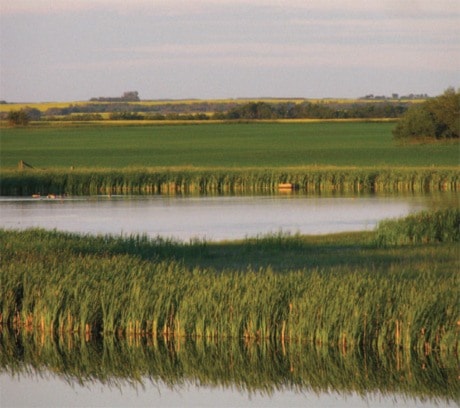BRENDA SCHROEDER
Independent Contributor
Driving around the countryside last summer, the sight of water laying in low areas was a common one.
Those large puddles and small sloughs were not only reminders of the great amounts of rain we were experiencing, they were reminders of the riparian areas that once existed and that have been drained, ploughed over and cropped.
The term ‘riparian area’ has become more and more important - and has become a meeting ground for farmers and conservationists.
Riparian areas are the green zones around lakes and wetlands – the vegetation that borders and connects rivers, streams and sloughs.
Most riparian areas are easy to overlook because of their small size – yet they provide services in our environment that are productive and valuable.
Healthy riparian areas often act like a sponge - absorbing excess water in times of plenty and releasing stored water during dryer times.
While they may seem to be in the way of the equipment during an average year - most of the time they could be seen as a key to managing through erratic weather cycles.
In fact while southern Alberta and Saskatchewan recover from the floods, the conversation about planting trees and recovering natural riparian areas has already begun as a measure for avoiding such extreme damage the next time around.
Riparian areas also play a key role in cleaning water systems and ensuring healthy drinking water for livestock as well as humans. Grazing operators are recognizing that healthy, productive riparian areas lead to opportunities for sustaining operations and to potentially make them even more productive.
This is because abundant water, shelter and forage that comes with riparian areas can translate into cash.
Organizations like Cows and Fish work with farmers to understand the health of the riparian areas on their own land and to take measures to improve.
Managing grazing rotation and time; fencing and solar-powered watering tanks; and altering feeding and mineral sites are all tools that are used to develop healthier riparian areas.
After many years of feeling at odds – where conservationists might have been perceived as trying to remove farmers from their lands and farmers seen as ignoring the ecosystems they depend on, the conversation is flowing between the two groups and co-operation around riparian management is finding ways that work for both groups’ goals.
